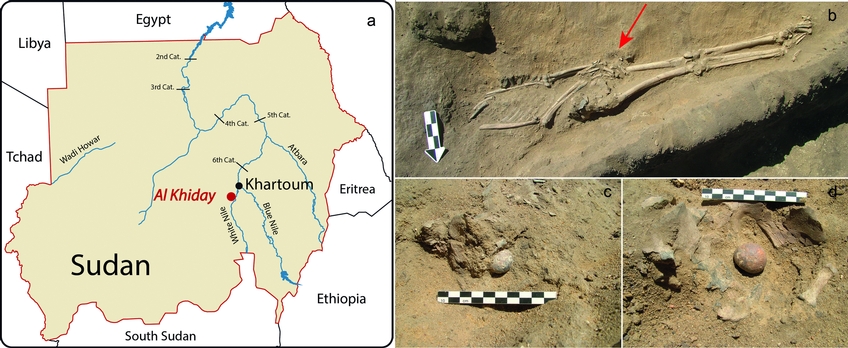Archaeologists using the INES instrument at ISIS have been able to make a surprising discovery which will change the way medics view the condition of prostate stones. Previously it was believed that this condition was exclusive to the modern era but in fact it appears to have existed in humans as far back as prehistoric times.
While excavating a cemetery in Central Sudan in 2013, a team of archaeologists from the UK and Italy unearthed a pre-Mesolithic burial with an unusual feature.
There were three stone-like objects found within the human skeleton. Archaeologists excavating the burial site found these objects within the pelvic area of an adult male and initially thought they could be kidney, bladder or gall stones.
The stones were oval and irregular in shape with diameters ranging between 26 and 30mm, weighing between 12 and 15g. Nowadays, prostatic stones are a common condition for modern men, affecting about 75% of the middle-aged population – although most stones only grow to a few millimetres in diameter before being treated.
After extensive tests utilising state-of-the-art technology, including the INES diffractometer at ISIS, scientists discovered the stones were primary prostatic calculi – or prostate stones, caused by a chronic infection.
Dr Antonella Scherillo, INES instrument scientist, said: “We were delighted to be able to help the archaeologists find out the nature of these unusual objects.
“Using ISIS’ powerful neutron beam we were able to analyse the phase composition of the object without causing any damage.
“This is how we found out the stones were in fact prostate stones – a remarkable discovery considering the age of the burial site.”
Although archaeologists cannot say whether these stones killed him, they were large enough to cause intense pain and affect the quality of life of this man.

Geographic location of Al Khiday sites in Sudan and an image of the grave showing the location of the prostate stones. Credit: D. Usai et al.
View full-size image
This is a significant discovery, as the disease has until now been considered to be an exclusively modern condition. But this proves it also affected prehistoric individuals, even though their lifestyle and diet were significantly different to our own.
By using the ISIS neutron facility, researchers could investigate the composition of the stones in a non-invasive manner. By measuring how the neutrons are scattered by the stone sample, the researchers could build up a picture of its mineral nature.
Until now, the earliest possible discovery of calculi – a hard mass formed by minerals in the body – was from an Italian grave from around 6,500 BC, but this latest discovery is thought to be older still.
The cemetery of Al Khiday, where the individual with pathological stones was found, is located in Central Sudan on the left bank of the White Nile, and is home to 190 graves of various ages.
Archaeologists were able to deduce the age of these remains by the style of burial and a detailed study of the mineral deposition of the bones, as well as radiocarbon dating the rock and soil in the burial site, which suggest the male lived around 10,000 BC.
Scientists used the Ines neutron beam to investigate the internal composition of one of the stones.
This research was put together by an international collaboration of archaeologists from the UK and Italy. Representing the UK, Dr Tina Jakob, from Durham University’s Department of Archaeology and co-author of the paper, said: “Although bladder stones have been discovered at other archaeological sites, this is the first known evidence of severe prostate calcification affecting men as early as 10,000 BC.
“This is a truly remarkable discovery and will change the way we look at prostatic stones as a modern medical phenomenon.”
Archaeologists hope the three prostate stones may now provide medical researchers with the opportunity to learn more about what causes the condition.
